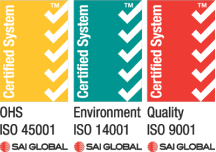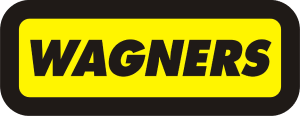Environmental Product Declarations (EPD) are based on Life Cycle Assessments (LCA) and communicate independently verified data about the environmental performance of products and services. Having an EPD shows that Wagners Composite Fibre Technologies (CFT) is an early mover in the market and demonstrates that the business has a genuine commitment to environmental responsibility and transparency.
That’s great, but what do I use the EPD for?
Procurement professionals and building design teams can use Wagners’ Environmental Product Declaration (EPD) as a quick and easy way to choose between products that achieve better sustainability outcomes than others.
Wagners’ EPD gives asset owners the tools to be able to calculate the environmental impact of a project and contribute toward reducing global warming through construction by choosing to use products with reduced embodied carbon; while at the same time meeting 2030 targets.
What does the EPD mean and how do I use it?
Join Product Engineer, Parminder Singh Jaj as he explores Wagners CFT’s new internationally recognised Environmental Product Declaration (EPD), comprehends what the terminology means and uncovers how to use the EPD and accompanying calculator to quantify the reduction of embodied carbon in your Wagners Fibre Reinforced Polymer (FRP) structures and meet 2030 targets.
The international EPD system is the world’s broadest system for environmental declarations, with a global scope and covering all types of goods and services. With EPD’s you can fairly compare environmental performance, reflect continuous environmental improvement and present relevant environmental information. To find out more about EPD’s visit the EPD Australasia website.
What are the advantages of an EPD?
The advantages of being able to access an Environmental Product Declaration (EPD) for a construction product like Wagners FRP is that the information is internationally recognised, adaptable, credible, comparable, comprehensive and neutral.
International
The International EPD System is based on the international ISO standards, assuring international use, acceptability and continuity.
Adaptable
No minimum level of preferences of environmental performance. Open to all types of products, target audiences and markets.
Credible
Based on scientific principles for Life Cycles Assement (LCA) and approved through independent verification.
Comparable
Based on specific rules for different product categories (PCR) ensuring that EPDs within the same category of products are calculated and presented in the same way.
Comprehensive
Providing a tool for communicating additional information such as social responsibility, quality control and environmental management.
Neutral
Any type of goods or services can be monitored. EPDs provide neutral facts rather than meeting specific demands.
Request a free Lunch and Learn with your local Wagners CFT Business Development Manager to bring your entire team up to speed on using our EPD to reduce global warming on your next project.
What kind of projects would Wagners’ EPD be useful on?
State and federal government departments throughout Australia and New Zealand have key targets to meet towards cooling the planet or decarbonisation in projects by 2030. One way they can achieve this is my choosing low carbon products for their projects, or products that have less impact on global warming. And this is where Wagners’ Environmental Product Declaration (EPD) fits in.
So the types of projects where Wagners’ EPD would be hugely useful are on projects funded by state or federal departments OR for clients or asset owners who are conscious of the role they play as environmental stewards.
CASE STUDY: Huskisson Mangrove Boardwalks, NSW
Upgrading an old timber boardwalk in an ecologically important mangrove forest that is home to several threatened species and feeds into an internationally recognised marine park is no mean feat!
Join Wagners CFT as we explore how MI Engineers and ALI Civil designed, planned and executed he upgrade installation of Huskisson Mangrove Boardwalk on Currambene Creek in Jervis Bay, NSW, using Wagners Fibre Reinforced Polymer (FRP) profiles to achieve a safer, wider and more inclusive user experience while at the same time minimising risk of environmental impact.
Currambene Creek estuary is an important feeding and roosting area for wading and migratory birds, such as the Australian bitterns and black-tailed godwit; meanwhile Jervis Marine Park is a Biologically Important Area for the white-faced storm petrel and a popular international whale watching destination for southern right and humpback whales.
CASE STUDY: Dominion Trail, City of Frisco, Texas
Join Wagners CFT as we explore how Texan landscape architecture firm, Halff, planned and designed upgrades ot the City of Frisco’s 1.2 mile (2 kilometres) Dominion Trail; minimising construction costs and environmental impact to the flood plains through the selection of Fibre Reinforced Polymer (FRP) structural profiles.
The Dominion Trail project is part of the City of Frisco’s Hike & Bike Masterplan, which aims to support the community’s desire to lead healthy, active lifestyles in a growing community.
Does Wagners’ EPD comply with international standards?
In short, yes! Wagners CFT’s Life Cycle Assessment (LCA) and Environmental Product Declaration (EPD) comply with the following international standards:
- ISO1404:2006 and ISO14044:2006+A1:2018 which describes the principles, framework, requirements and provides guidelines for life cycle assessment (LCA) (ISO,2006; ISO, 2018).
- ISO 14025:2006 Environmental labels and declarations – Type III environmental declarations — Principles and procedures, which establishes the principles and specifies the procedures for developing Type III environmental declaration programmes and Type III environmental declarations (ISO, 2006).
- EN 15804+A2:2019: Sustainability of construction works – Environmental product declarations – Core rules for the product category of construction products (here after referred to as EN15804+A2).
- Product Category Rules (PCR) 2019:14, v1.2.5 – Construction products – Hereafter referred to as PCR 2019:14.
- General Programme Instructions (GPI) for the International EPD System V4.0 – containing instructions regarding methodology and the content that must be included in EPDs registered under the International EPD System.Instructions of EPD Australasia V3.0 – a regional annex to the general programme instructions of the International EPD System.
What are the options for FRP at end of life?
Wagners Fibre Reinforced Polymer (FRP) products are non-toxic and do not contaminate the environment when disposed of as a landfill. Furthermore, end of life of Wagners FRP products is not just limited to landfill, but can be reused in different low strength applications like fence posts, industrial and household furniture and park benches for a couple of examples. Wagners CFT is also working on emerging technologies like pyrolysis that can be used to decompose the polymer and recover the glass fibres.
For more details on the recycling technologies of FRP read this article in the Journal of Marine Science and Engineering.
Have a project in mind?
Book a project deep dive with us and work through your projects plans and problems with the experts!

